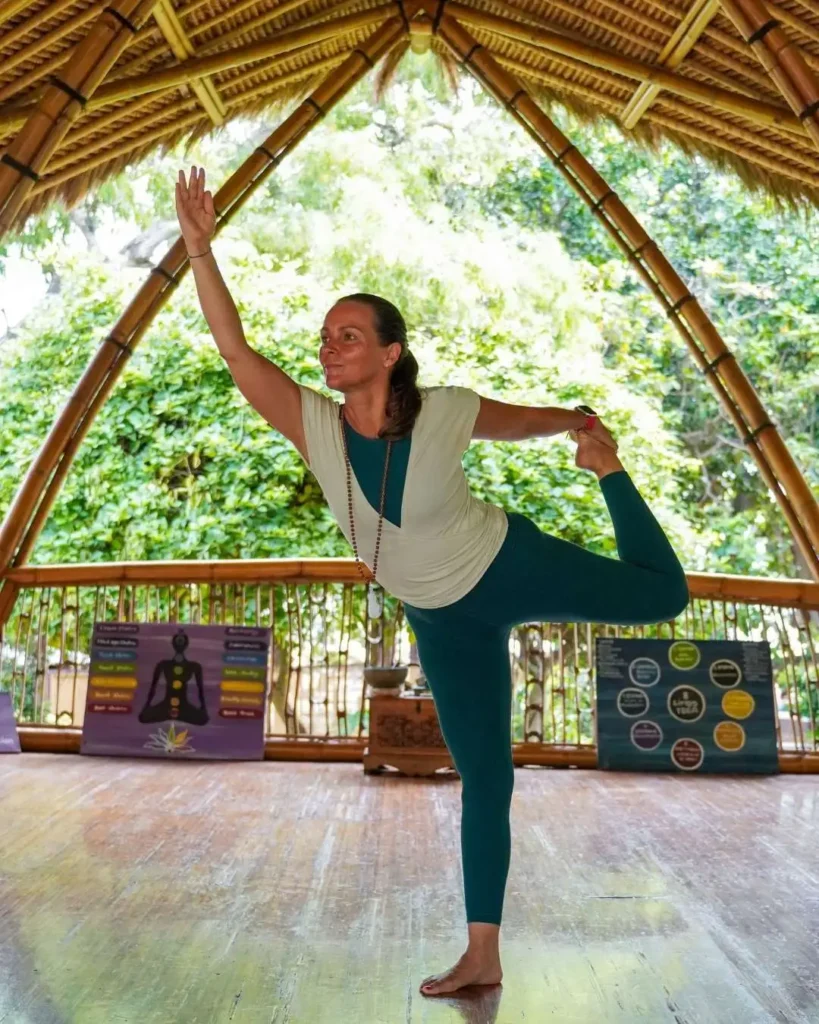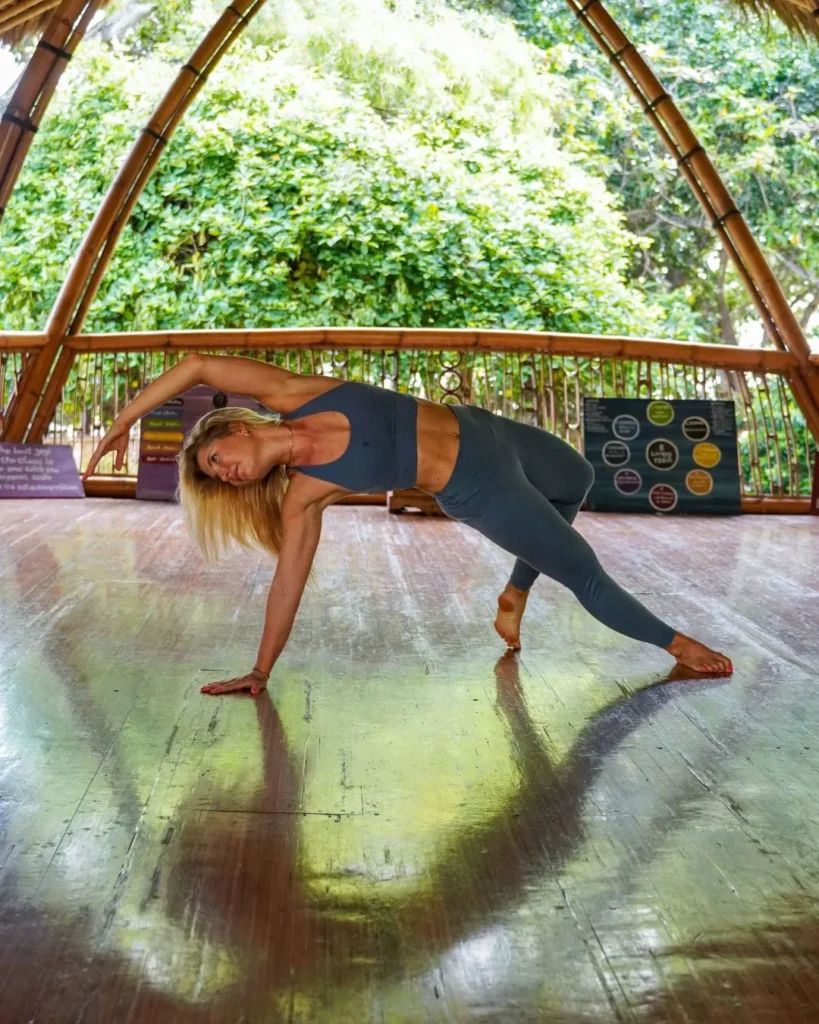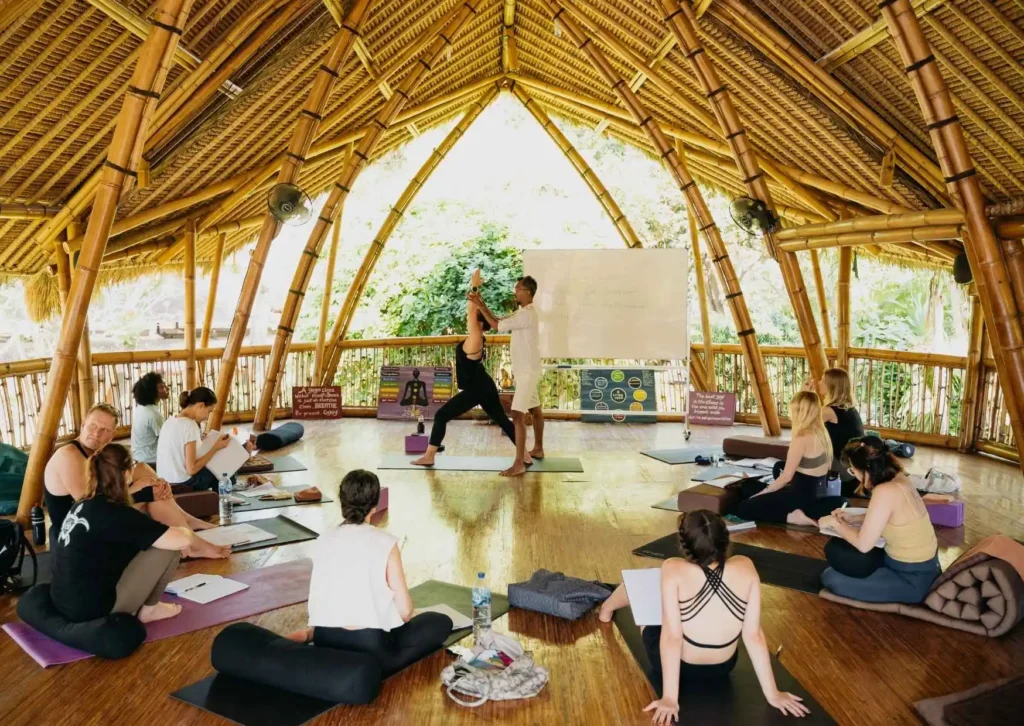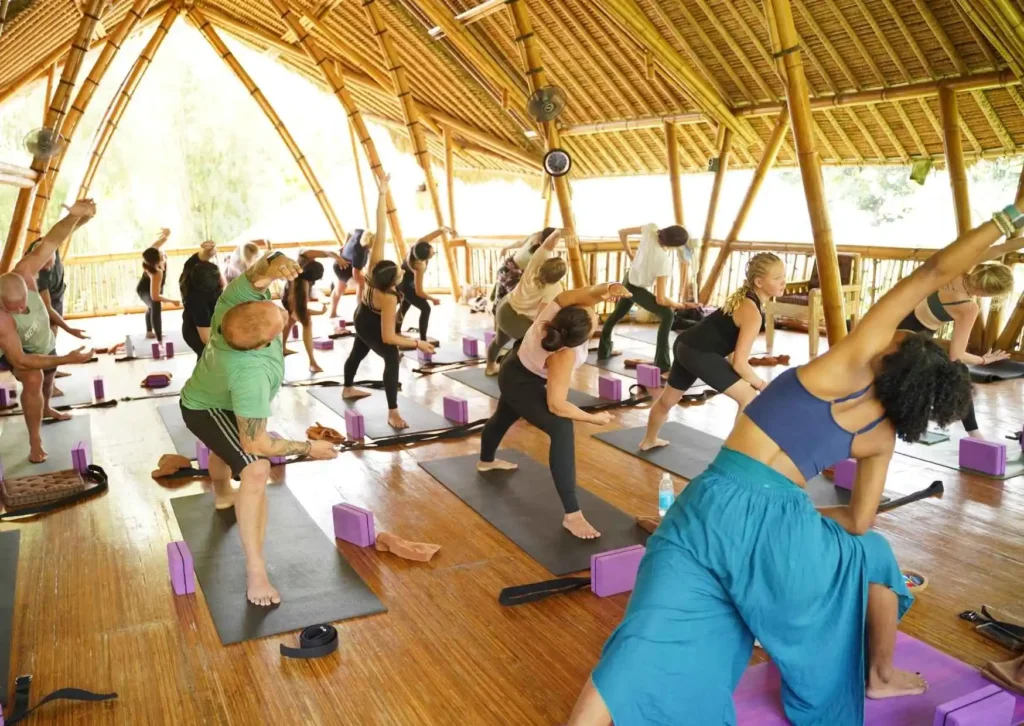Hatha and Vinyasa yoga are two of the most common styles, here’s how they differ and how to choose the right one.
If you’ve ever looked at a yoga schedule and wondered what exactly makes a Hatha class different from a Vinyasa one, you’re not alone. These are two of the most common styles you’ll see on a timetable, and while they share the same roots, the way hatha and vinyasa yoga feel during a session can be quite different.
At Power of Now Oasis, our Yoga Teacher Training in Bali is rooted in both Hatha and Vinyasa. We believe these practices complement each other beautifully, Hatha offers stability and alignment, while Vinyasa brings flow and rhythm. Together, they give students a strong foundation to grow both as practitioners and as future teachers.
In this article, we’ll take time to explore what each style is, their benefits for body and mind, and why practicing both hatha and vinyasa yoga can help you find balance.
Table of Contents
The Roots of Hatha Yoga
Hatha yoga is often considered the foundation of modern yoga. The word “Hatha” comes from Sanskrit: ha (sun) and tha (moon), symbolizing balance between opposing forces. It’s not just about exercise; it’s about uniting the mind, body, and breath.
In a typical Hatha class, you’ll find the pace slower and more deliberate. Each pose is held for longer periods, allowing you to focus on alignment, breathing, and awareness. Instead of moving quickly from one position to another, you pause and really feel what’s happening in your body.
This style is especially helpful for beginners, but it also benefits experienced practitioners who want to refine their practice. Because Hatha emphasizes the physical details, it can reveal subtle adjustments that make each posture safer and more effective. The slower approach reduces stress, builds patience, and cultivates a calm state of mind.
Hatha doesn’t stop at movement. Traditional classes often include pranayama (breath practices) and short meditations. These elements are essential for mental clarity and overall health, teaching you to regulate your energy both on and off the mat.
The Flow of Vinyasa Yoga
If Hatha is about stillness and structure, Vinyasa is about movement and flow. The word “Vinyasa” means “to place in a special way,” and in practice it refers to linking poses together through breath. Each inhale and exhale becomes the guide for your movement, turning the class into a moving meditation.
During a Vinyasa session, you might start with Sun Salutations to warm up, then flow through sequences that challenge your strength, coordination, and flexibility. Because the transitions are just as important as the postures, your awareness sharpens. You begin to see that yoga isn’t only about where you arrive, but how you move along the way.
Vinyasa is versatile. Some classes are dynamic and sweaty, offering the kind of exercise that supports overall fitness. Others are slower and gentler, focusing on breath and mindful flow. No two classes are exactly the same, which keeps it engaging and fresh.
The uplifting rhythm of Vinyasa makes it a wonderful antidote to stress. Many people leave class feeling both physically energized and mentally lighter, as though the flow has washed away tension.
Hatha and Vinyasa yoga: Key differences


Though they share the same roots, hatha and vinyasa yoga feel distinct on the mat. Here are some of the main differences you might notice:
- Pace: Hatha moves slowly, with time to hold postures; Vinyasa is faster and fluid.
- Focus: Hatha emphasizes alignment and breath awareness; Vinyasa highlights transitions and flow.
- Energy: Hatha feels grounding and steady; Vinyasa feels dynamic and invigorating.
- Experience: Hatha is excellent for beginners or anyone refining their physical foundation; Vinyasa suits those who enjoy creativity, rhythm, and variety.
Neither style is better, choosing between hatha and vinyasa yoga depends on what you need on a given day. Many practitioners alternate between them, discovering that both bring unique benefits for body and mind.
How Hatha and Vinyasa yoga complement each other
One of the great strengths of yoga is its adaptability. Some days your body calls for slower practices that cultivate stability; other days it craves the fire of movement. By practicing both hatha and vinyasa yoga, you give yourself options.
- Hatha benefits: Enhances posture, improves flexibility, develops mindful breathing, and reduces mental clutter.
- Vinyasa benefits: Builds stamina, increases strength, offers cardiovascular exercise, and creates flow states that help release tension.
When practiced together, hatha and vinyasa yoga cover the whole spectrum of yoga: grounding and uplifting, static and dynamic, meditative and energetic. This balance supports not only your fitness but also your long-term health, making yoga sustainable as a lifelong practice.
Hatha and Vinyasa Yoga in Our Teacher Training

At Power of Now Oasis, our 200-hour Yoga Teacher Training in Bali follows a well-structured curriculum that prepares students to confidently teach both Hatha and Vinyasa yoga. Throughout the program, you’ll explore the grounding qualities of Hatha alongside the creative flow of Vinyasa, learning how each style supports different aspects of practice and teaching.
In our curriculum, hatha and vinyasa yoga are taught side by side.
- Hatha in the training: We focus on alignment, safe adjustments, and the principles behind key poses, giving you a strong physical foundation and the skills to guide students with clarity.
- Vinyasa in the training: You’ll study sequencing, pacing, and how to design flows that build strength, encourage flexibility, and maintain balance between effort and ease. Whether guiding a short class or a longer hour of practice, you’ll learn to adapt to different settings and student needs.
This blend of approaches ensures that by the end of the training, you have both the knowledge and confidence to offer classes that suit a wide variety of students and places. Many graduates find that this balanced curriculum not only deepens their own practices but also helps them support others with the tools to manage stress, improve fitness, and cultivate long-term health.
Graduates leave ready to sequence and teach hatha and vinyasa yoga with clarity and confidence.
Choosing between Hatha and Vinyasa yoga
If you’re still unsure whether Hatha or Vinyasa is for you, consider the following:
- Do you like slowing down, exploring alignment, and focusing on mindful breathing? Try Hatha.
- Do you enjoy rhythm, variety, and a little sweat during your hour on the mat? Vinyasa could be your match.
- Not sure? Try both and notice how different sessions affect your body, your mental state, and your energy.
Remember, yoga isn’t about choosing one style forever. It’s about listening, experimenting, and discovering what supports you best in this moment.
Practicing in Bali

Many of our students tell us that Bali is one of the most inspiring places to explore yoga. Practicing on the beach in Sanur, with the sound of the ocean nearby, adds a natural calm that supports both Hatha and Vinyasa.
Daily classes at our studio give you the chance to experience both styles guided by experienced teachers. Whether you come for a single drop-in session or for an immersive teacher training, the environment encourages growth, reflection, and connection.
And if you’d like to go deeper, our Yoga Teacher Training invites you to fully immerse yourself. You’ll practice daily, study philosophy, and learn to teach confidently, all while being part of a community that feels like family.
Final Thoughts
Hatha and Vinyasa may appear different, but together they enrich your yoga journey. Hatha gives you strong roots in alignment, mindful breathing, and stillness. Vinyasa branches outward, offering flow, creativity, and fitness.
At Power of Now Oasis, we embrace both, in our daily classes and in our training. By practicing and studying them together, you don’t just gain physical skills and flexibility; you also experience the deeper mental calm and emotional resilience that yoga has offered for centuries.
If you’re curious to learn more, explore our daily classes or read about our Yoga Teacher Training in Bali. Whether you want to refine your own practice or guide others, combining Hatha and Vinyasa will give you the tools, confidence, and understanding to share yoga authentically, wherever your path may lead.
